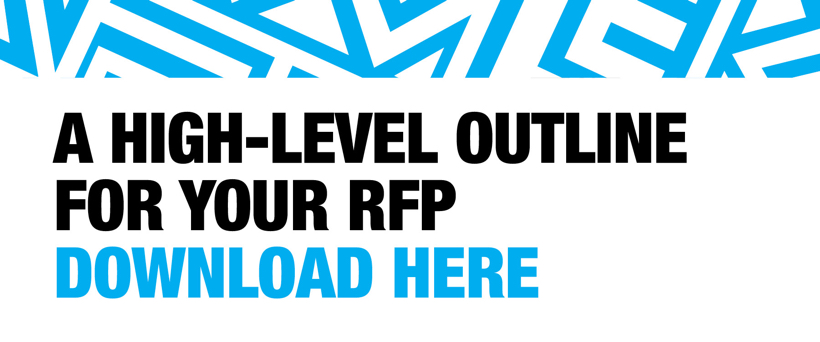This article appears in the Spring 2017 digital issue of DOCUMENT Strategy. Subscribe.

Image by: Connel_Design, ©2017 Getty Images
Selecting a document management vendor is challenging work, but with the right steps, you can make the best choice at the right price. Before you begin, it’s important to understand your document management issues, working across the applicable departments, and to develop the needed requirements.
After you’ve done your homework, the first step is to assemble your requirements document. By doing so, you will be forced to review and reduce the collected information into a concise and readable document. In addition, you will be able to verify all the data, revisit possible weak areas, and summarize the finer points to not only yourself but to the larger team that will be part of the project.
Depending on your company, and whether you are public or private, you may be required to write a formal request for proposal (RFP) or simply an informal requirements document will do. Either way, you must provide prospective vendors all the required information for the project. If you don’t, there will be an endless round of questions from the vendors until they feel sufficiently comfortable in estimating a price for your system and the amount of time it will take to implement it.
The Guidelines
1. Be prepared to have a longer-than-anticipated selection process. Selecting a vendor is a challenging job. Not only will you have multiple vendors, all with different levels of needs, but you will also have five to 10 (or more) people in your selection committee—all of whom have different agendas, wants, and needs. The first step is to develop a project schedule, beginning with writing the RFP and ending with selecting the vendor.
2. Vendor pricing is an estimate. Your RFP requirements must be good enough to get a price estimate from vendors but not good enough to settle on a “best and final” price. Once you narrow down the list of vendors and invite them in for a demonstration, they will be better able to reassess their pricing. Even then, the price will change, mostly because once you see what is being built, you will begin to ask for additional services. There are many, many variables at work in pricing a system.
3. Treat the vendors as potential partners, one of whom will be with you for a long time. Keep them current with frequent updates, respond to questions quickly, provide any relevant information that is requested, and, if necessary, have a one-on-one session with the vendor to clarify any issues. However, do not provide or disclose information that would give one vendor an advantage over another—unless you provide that information to all vendors.
4. When receiving proposals, develop some type of scoring sheet for all members of the evaluation team to use. Reading up to 1,000 pages can be hard work, and evaluators must have some method for scoring each proposal as it is read. For example, I use a 1 (=bad) to 5 (=good) scale for each major requirement. I also ask for general comments, like, “Was it easy to read? Did the vendor follow instructions? Did the vendor write unique answers, or was it full of boilerplate? Was the proposal put together well, or was it sloppy?”
5. Scoring and evaluating each proposal is only the first step. This scoring process allows vendors to move to the next phase, which involves a full day of presentations and demonstrations. Plan to have a short list of two or three vendors and invite them to provide a presentation and demonstration of their proposal. For example, you could set the below agenda for this review:
- Presentation: Ask vendors to talk about how their proposal responds to the business aspect of the RFP. This is to show that the vendor understands the business reasons for the RFP and to explain how their software will satisfy this business issue.
- Demonstration: Ask vendors to demonstrate such things as setting up a document library, searching for documents, developing a workflow, and reviewing their records management capabilities. Prior to the demonstration, collect a list of the most important functions to see from your evaluation team. Generally, you can narrow this down to a “Top 10” list that the vendor must incorporate into their demonstration.
- Pricing Review: Ask vendors to go through each line item in their pricing proposal and explain its purpose and how they quantified and priced it. We often find that vendors have added software that is not needed or have misestimated (e.g., the number of seat licenses needed).
7. During the review, the evaluation team should ask the vendor questions and/or for clarifications. Someone should be responsible for writing these questions down and reviewing them with the vendor at the end of the day. If there are still outstanding questions to be answered, the vendor should be given this list and be able to respond to them in a timely manner. In turn, the vendor might ask you questions that may need a follow-up response if it can’t be provided during the presentation. An example may be, “How many actual users will be on the manufacturing floor?” You may have to revisit this based on your new knowledge of how seat licensing is configured. Don’t depend on the vendor to accurately write down the questions that need to be answered.
8. After you have agreed on a winning vendor, you may incorporate a visit to the vendor’s headquarters, meet with their senior management, and tour their facility.
- Meeting with the senior management team is not a simple meet and greet. You may want to review their future business and technical roadmap for the company and products, talk about their research and development activities, and tour their help desk area.
- Prior to the visit, it is a good idea to research the company (perhaps a Dunn & Bradstreet report).
- These visits often strengthen your ability to work with the vendor and have a personal relationship with their management team, not just with their sales representative. Remember, the document management industry is currently undergoing a consolidation and realignment. Research your vendor to ensure it is stable and is not a candidate for a purchase/takeover/Chapter 7 filing.
9. It is highly possible that the presentation/demonstration day will help to define a clear winner. When we do this, one vendor generally begins to stand out among the rest, and we begin to increase our focus on that provider.
Selecting a vendor can take up to, and sometimes more than, 12 months. Once selected, the initial implementation period can take up to six months. The remaining phases may go more quickly but could take six months per department. For a complete enterprise, including human resources, sales, marketing, accounting, etc., the process can take 24 months. It is entirely possible that as you implement the solution, you will begin to add additional workflows, document library settings, and other resources as you learn more about the document management solution capabilities.
Bud Porter-Roth has over 20 years of experience as an enterprise content management (ECM) consultant, with a focus on cloud collaboration, electronic document management, records management, and paper document projects. He is also the author of Request for Proposal: A Guide for Effective RFP Development. Follow him on Twitter @BudPR or contact him at info@erms.com.















